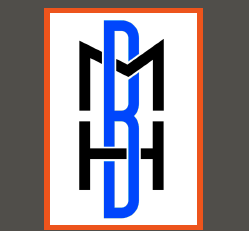
3rd Annual Parranda con Paranda: Puerto Rican and Garifuna Holiday Celebration
Dec 23, 2015 @ 12:00am
For our 3rd annual Parranda con Paranda: A Puerto Rican & Garifuna Holiday Celebration, we evoke the Puerto Rican traditions of “parrandas”—Christmas caroling processions and the Garifuna “paranda” song style to bring together these two communities. If you listen closely to the big barrel-type drums both groups use, you can hear echoes of familiar rhythms that call to both. The groups are also connected by a shared home in the Bronx—our borough is the largest Puerto Rican city after San Juan and the Bronx is also the home to the largest community of Garifuna outside of Central America.
This year we will focus on the role of women in both musical traditions. Among the Garifuna abeimahani songs are semi-sacred, unaccompa- nied, gestured songs only sung by women, as op- posed to another song type, arumahani, which are acapella songs by men; though today ar- umahanis can be performed by women and led by a male singer if there are not enough men pre- sent. During the performances of both types of song, the vocalists stand alongside each other clasping pinky fingers to the person next to them. These songs are usually a component of the Dugu, a religious ceremony that is done to communicate with ancestors.
While it is thought bomba may have had a religious significance at a one time now the genre is a completely secular one. It is the oldest of all of Puerto Rico’s music traditions with roots in West Africa. Bomba’s history is associated with the rural areas, where it developed in the context of colonial plantation life and refers to a variety of music and dance forms which are performed in the context of a baile de bomba (a bomba dance or a celebration also referred to as a bombazo). During the plantation period, enslaved Africans participated in these dances (bailes) on their day off, as well as to celebrate baptisms and marriages. The drums used in bomba are called barriles. A bomba group requires at least two or three barriles; a cúa (a pair of sticks struck upon a hard surface) and a single maraca.
The barriles that keep the constant rhythm are called the buleadores, or seguidores while the drum that interacts with the dancers when they perform their piquetes (steps), is called the primo or subidor. During the dance, the dancer creates a dialogue with the drummer of the subidor, by getting her to respond to her dance movements with her repiques or toques (drum strokes). While traditionally in the purview of the male drumming in the latest generation of musicians, has many women as active participants. From groups like Yaya, The Legacy Women Circle, Bámbula and Ojos de Sofia, women are bandleaders and drummers as well as lead vocalists and dancers.
The musicians playing the traditional music of Puerto Rico have gained a lot of their training in groups and venues based here in the Bronx—with the center of activity being the casita, Rincón Criollo in Melrose. The casita was started by Chema Soto in the mid-1970s and like the community gardens throughout the City and casita in Puerto Rican neighborhoods elsewhere, Chema created the casita to reclaim a place for his community amid the devastation. But Rincón Criollo, or “La casita de Chema,” as it has affectionately become known as, is the place where traditional Puerto Rican musicians from here and the island go to hear and play this music.
